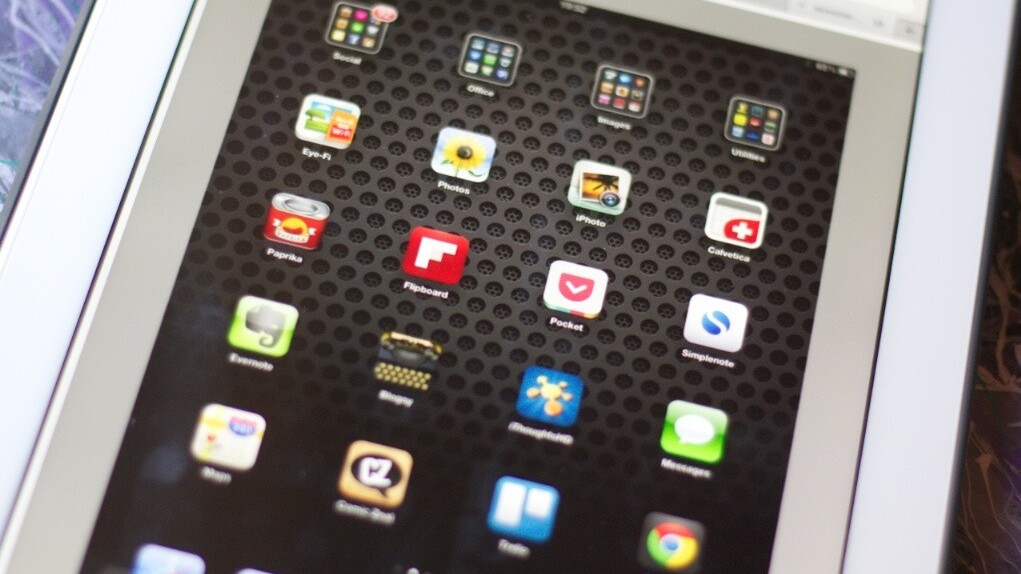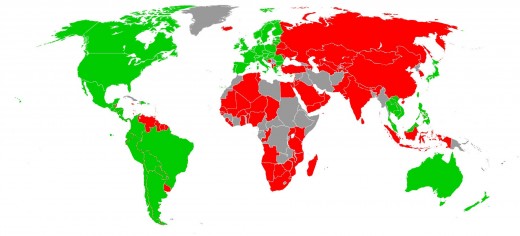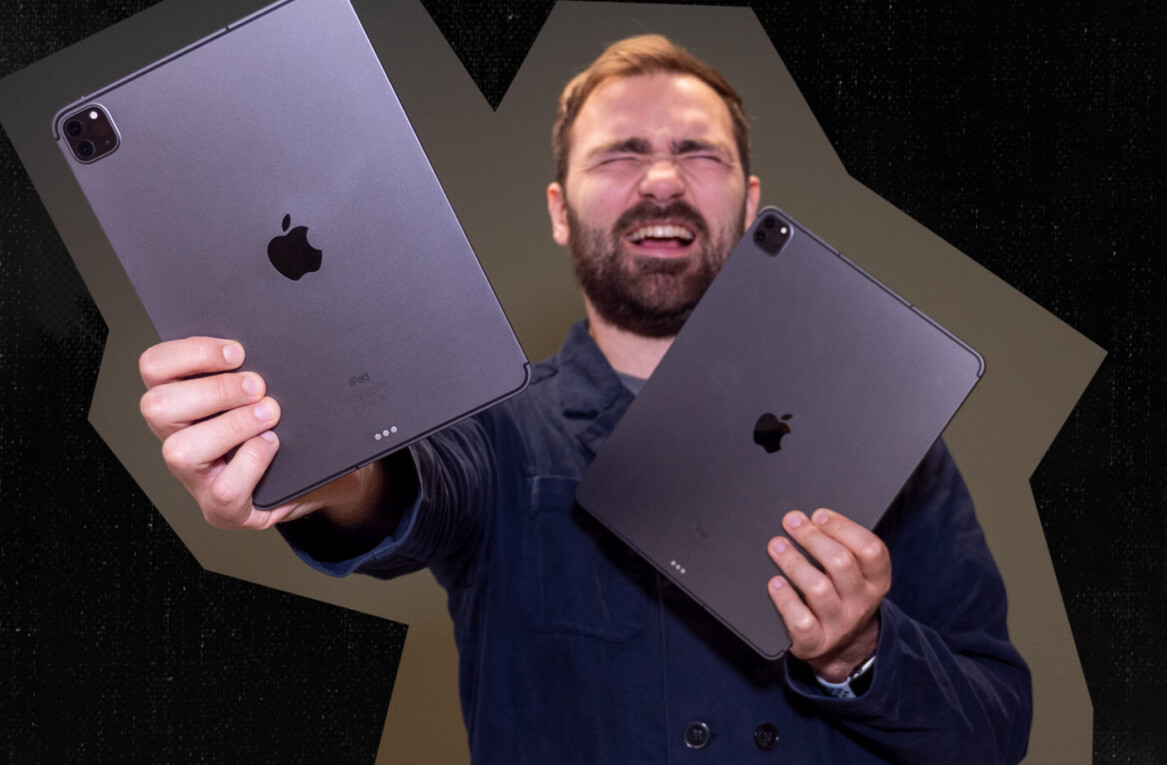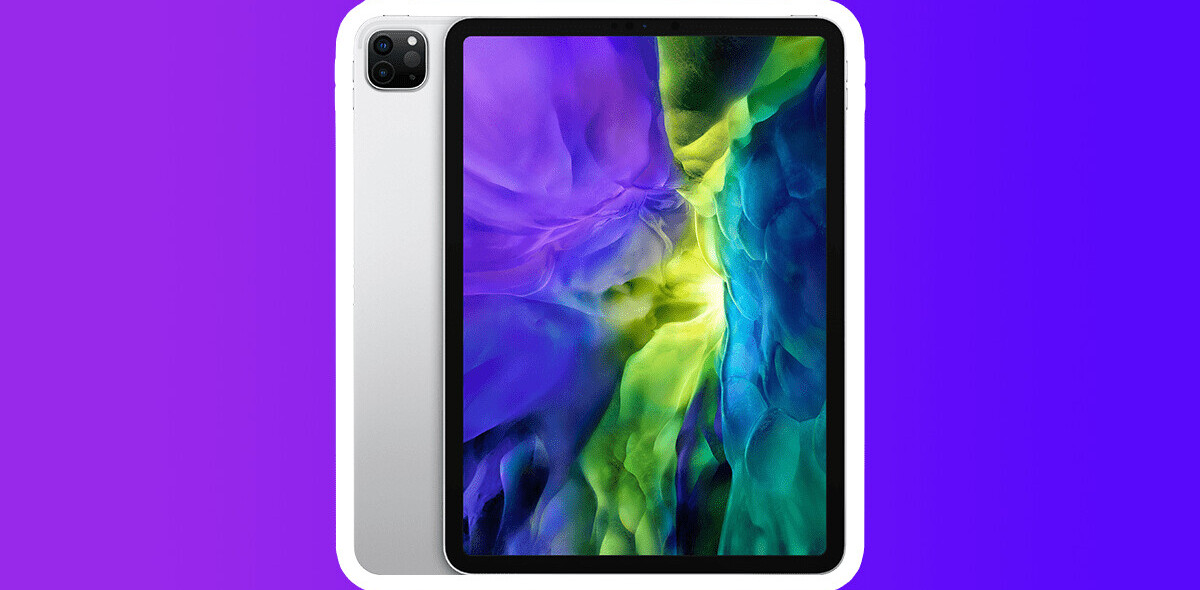
If and when Apple releases an 8″ version of its iPad tablet, it will likely define the small tablet market much in the way that its larger sibling has done for ‘regular’ tablets. Unlike the iPad and other theoretically successful larger options, the iPad mini and other small tablets are conduits for content, and that’s where Apple trounces the competition.
I’ve seen a lot of speculation about the success of an iPad mini that focuses on how well it will compete with the ‘successful’ Kindle Fire or the new Nexus 7 tablet. I’m a bit confused by this attitude, which positions these devices as established or ‘guaranteed’ contenders for the hearts and minds of those looking for a tablet smaller than the iPad.
To put it bluntly, there is no small tablet market.
It has yet to be defined by a truly successful product and the various entrants so far are treading water at best. The Kindle Fire, which has been touted as a success story by many, has sold 4 million units, or maybe 6 million, or who knows really because Amazon has never revealed any hard sales numbers besides ‘a lot, trust us, people are buying them‘. And data from channel checks by IDC point to perhaps 700k shipments, not even sales, last quarter.
Two years ago we were talking about the tablet market as a contiguous whole. There was talk about whether anyone would buy the iPad and that others had tried to make consumer tablets and failed. Now, the iPad is a massive success that has yet to be duplicated by any other manufacturer or platform.
But the tablet market isn’t a single ocean, it’s a set of interlocking bodies of water that we’re just beginning to see take shape. And the iPad mini isn’t about competing with the wriggling tadpoles already in the ‘small tablet’ pond, it’s about a big fish extending its dominion.
But how will the iPad mini dominate this new segment of the tablet market that Apple essentially defined? As usual with Apple, the answers are much simpler than many people would assume.
8″
If the rumored specifications of Apple’s new smaller iPad are correct, it will have a screen measuring 7.85″ diagonally. Now, I’m not the best at math, but that’s closer to 8″ than it is 7″, so I’m really not sure why everyone is calling it a 7″ tablet. The iPad is 9.7″ but everyone seems comfortable comparing it to 10-inch tablets like the Galaxy Tab.
I’ll let this graphic made by Trojan Kitten and posted to Twitter speak for the math:
As you can see, the prospective iPad mini would feature a 40% larger screen size than the current 7″ tablets like the Nexus 7 and the Kindle Fire. That’s a lot of extra screen real-estate and puts the iPad clearly in its own segment of the market. It’s bound to be compared to the Nexus and Kindle Fire endlessly, and will likely vie for the same sorts of consumers, but it will be different.
Its size will mean that touch targets will shrink, but not unmanageably. Joel Bernstein took a look at how Apple’s Human Interface Guidelines have prepared conscientious designers for the smaller screen already. Rene Ritchie at iMore also delved into how developers could go about translating apps to a smaller iPad, noting that scaling iPad apps down, rather than iPhone apps up, is the way to go.
If you’re still convinced that there will be issues using iPad apps on an 8″ iPad mini, check out this excellent app size comparison tool from blogger and programmer Richard Gaywood. Load up one of the sample app screenshots on your current iPad and pretend you’re tapping on the icons. Do you foresee having any issues hitting those targets? I sure don’t.
And don’t think that the 7.85″ size is a coincidence, either.
In the old days, screen sizes of devices like monitors and such were largely determined by the panel manufacturers. The makers of products would design them around what was available and you would find the same screen on half a dozen different TVs or in a variety of different computer monitors. There are still some manufacturers that share screen technologies, but fewer are sharing panel sizes (though there are some Android phones you’ll find using the same exact panel).
Apple, as the 8,000lb gorilla of consumer device manufacturing, makes no compromises here and has custom built screens that use technology far in advance of the rest of the market. Eventually the panel tech becomes available to other manufacturers, but the sizes are bespoke.
Which brings us to the 7.85″ panel. If Apple can literally have any size screen it feels necessary, then there must be a reason for the ‘really close to 8 inch’ number. And in fact, there is. Appadvice has a good breakdown of why 7.85″ is such an important number for Apple.
To summarize, a 7.85″ iPad would work out to a 1024×768 panel at 163ppi, the same resolution that all of the pre-Retina iPhone models used. This is important because it would mitigate the cost of production of the device, one important factor in a recipe for iPad mini dominance.
The Recipe
The recipe for the success of an iPad mini is, in a lot of ways, very similar to that of the iPad. Since I’ve gone over the win factors of the iPad at length before, I’ll just summarize the things Apple has going for it here.
Pricing and profit
Tablets don’t work on the subsidy model. Unlike smartphones, carriers just aren’t seeing enough of a kickback from plans to eat the up-front cost of tablet hardware in hopes of a nebulous return from the purchases of data packages. This makes the raw retail pricing of a tablet of supreme importance. Google knows this, that’s why the Nexus 7 is being sold at $199, even though it is likely taking a loss on it after marketing and logistics are factored in.
Apple’s manipulation of relationships with suppliers and manufacturers over the last ten years has led to it being able to use the best materials and manufacturing processes in the world, and to do it cheaper than anyone else. This lets the Retina iPad turn a profit at the same price as the non-Retina model was just a year before. 
Utilizing this supply chain prowess, Apple will likely be able to turn a tidy profit on an iPad mini.
The panels of the tablet are likely to be sliced out of larger flats that are already being made to fill iPhone 3GS orders. The panels are manufactured in large sheets, which are then filled with liquid crystal and cured in a machine like the one on the right, owned by manufacturer AUO. They’re then scored and snapped into the chosen size, the edges are ground and polished, electronics are attached and the panels are tested and inserted into devices.
That’s a simplification of the process, but it does mean that there are significant cost savings to be had on Apple’s part, as the scoring and snapping of the screens can simply be done at the 7.85″ diagonal, rather than ‘iPhone sized’.
Apple Retail stores
With over 370 stores of its own in which to sell the iPad mini, Apple also gains a significant pricing and promotional advantage over competitors like the offerings from Amazon or Google. Every iPad that Apple sells through its own retail channel means a sliver more profit for the company, a bit of extra margin.
In addition, they provide a beautiful demo station, allowing people to handle them in a psychologically pleasing environment with staff on hand. The clean and bright Apple Stores are a far cry from a forest of battered devices tethered to a counter in Best Buy.
The halo effect
The draw of Apple’s current iOS devices is massive. The iPhone and iPad are beastly generators of consumer interest that cast a bright glossy halo onto Apple’s other products. This includes the Mac, a fact which Apple acknowledged when it began unifying the OS X experience and the iOS experience last year, and continued to do this year with Mountain Lion.
The 350 million iOS devices sold so far act as a long tail enticement for the sale of an iPad mini. Every time someone purchases an iPhone, a Mac, or even an iPad, it becomes much more likely that they will consider an iPad mini over a competing device.
Android devices don’t give the Nexus 7 this same advantage because their experiences vary so widely. Nothing about using a phone from Google’s Nexus line, one from HTC and one from Motorola provides a consistent user experience. They’re all over the map, and that’s even more the case when it comes to Android tablets, many of which are running Honeycomb or, in the case of the Kindle Fire, some weird fork of its own.
The millions of Android devices on the market are a testament to the operating system’s success as a competitor to iOS, but they don’t act as a driving force that spurs people to adopt Android tablets.
And that’s not even mentioning the huge array of content and app options available to iOS users, all of which contribute to the attractiveness of a smaller iPad. Because, in reality, this is the defining characteristic of a smaller tablet: it is a conduit for delivering content.
A conduit for content
The small tablet is an ideal platform for the consumption of content. They’re smaller and lighter, easier to hold in one hand for long periods of time. They provide a decent-sized screen for reading books, watching movies and using apps that are as likely to be games as anything else.
This was essentially Amazon’s sales pitch for the Kindle Fire, which it said was ‘all the content, half the price’ when compared to the iPad. It’s also how Google pitched the Nexus 7 at its recent I/O conference, and how it designed the software, with widgets hocking its wares placed front-and-center for users.
Unfortunately, all of this content browsing and buying and enjoying isn’t going to be happening much outside of the US unless you’re using an Apple tablet.
I’m not quite sure why, but a lot of people seem to have blinders on when talking about the potential success or failure of content consumption devices. Blinders painted with American flags. See, all of this beautiful content that you’re supposed to be able to purchase with ease and enjoy on your small tablet is mostly nowhere to be found on the Amazon or Google stores if you’re lucky enough to live outside of the US.
Amazon’s Appstore is available in 1 country in the world, the U.S.. Its movie streaming service? Also U.S. only. You can get Kindle Edition books in many more countries, so at least there is that.
Google fares slightly better. Its Google Play Store books are available in Australia, Canada, Germany, Italy, the UK and the US. Movies are available in those countries as well as Japan, France and Spain. But you can still only purchase movies in the U.S.
It’s when you compare that to Apple’s offerings that its content advantage snaps into sharp focus. The green areas on the maps below are countries in which all of Apple’s offerings including apps, movies, music, TV shows, iTunes Match and iTunes U are available. The red ones are where just some of those services are available.
Notably, Apple’s music, movie, app and book offerings are available in all 63 countries listed here, aside from Romania, which gets no movies, bummer.
The thing is, these deals are very, very hard to make. The studios and media conglomerates that control the content Apple sells and rents via its store are old-world to the core. They’re loathe to make deals for content that they don’t completely control, so they can squeeze out every last drop. Apple has been fighting to make this content easily available for ten years. It’s still only managed to convince most of these dinosaurs to allow it to sell music and maybe movies, because selling things for money is something they understand. Which is why the cool syncing service iTunes Match is still only available in limited countries.
Google and Amazon are years behind Apple when it comes to making movies, music and apps available to mobile device users. Even Amazon, with its massive success in selling books, has had so difficult a time that its apps and movie streaming services are still only available in one country.
If Apple’s goal is to own the tablet market whole, which it has had great success in doing so far, then it will likely release an iPad mini. But it will do so not because it needs to compete with the Kindle Fire or the Nexus 7. As good as the Nexus hardware is, or the Kindle Fire 2 will be, it’s the content that will sell smaller tablets, and Apple is the only company around that has it in spades.
Get the TNW newsletter
Get the most important tech news in your inbox each week.








